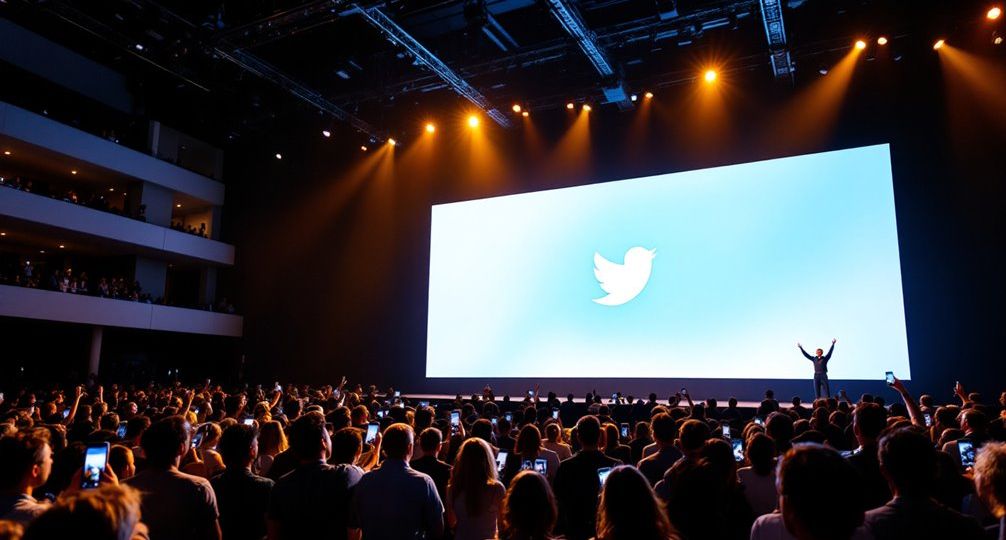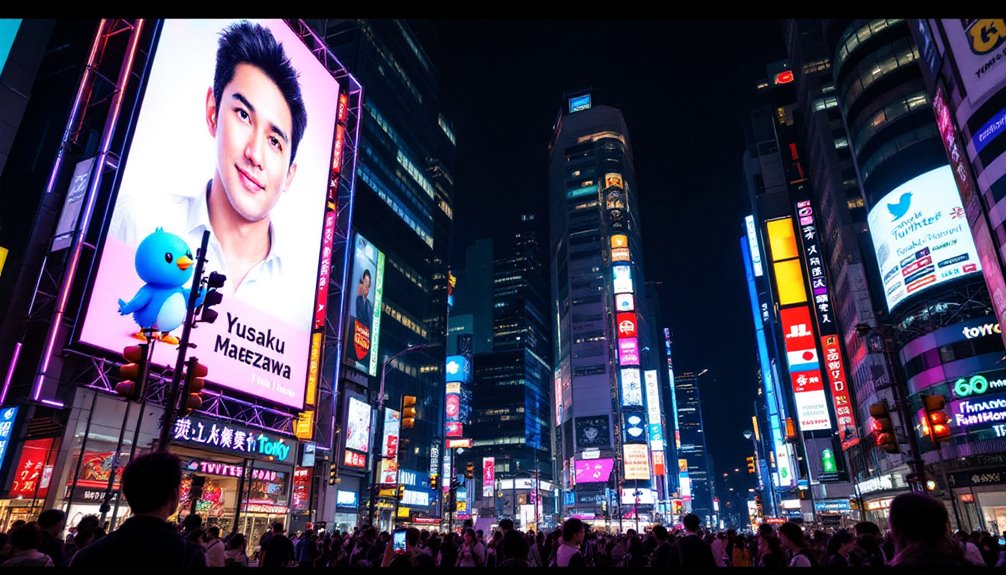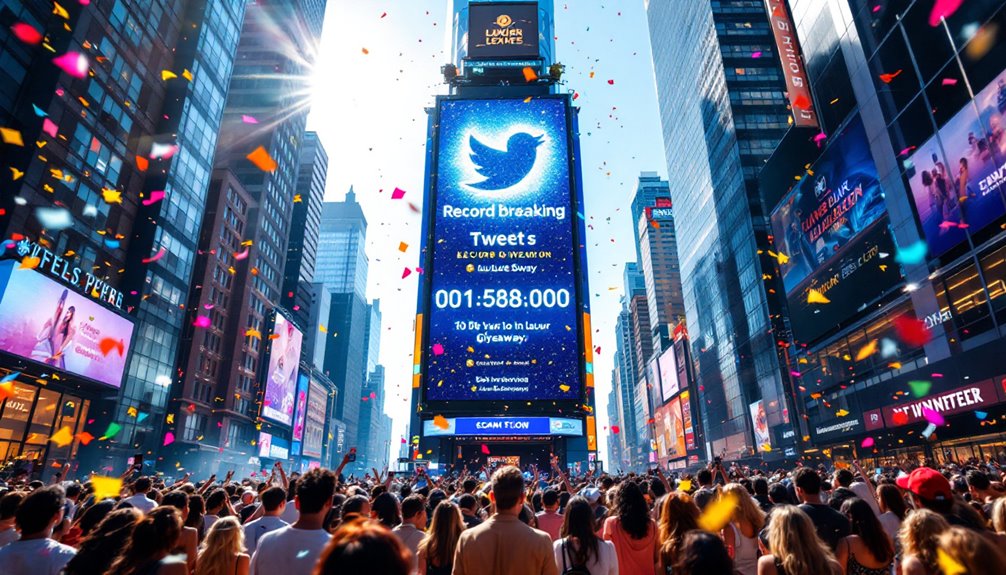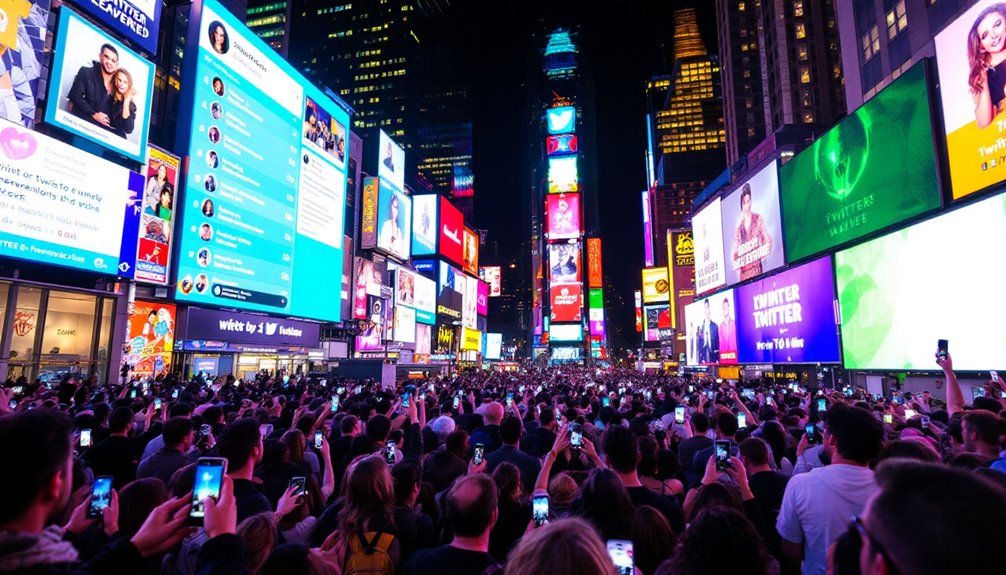
Who has the most retweets on Twitter?
Imagine Twitter as a bustling marketplace where tweets are commodities, and the most retweeted ones are the prized jewels. You might wonder who holds the crown for the most retweeted tweet. As of 2023, it’s Yusaku Maezawa, whose generous offer turned his tweet into a viral sensation. But what makes a tweet worth such widespread attention? Is it the allure of money, the influence of celebrities, or the emotional resonance of the message? These questions invite you to explore the fascinating dynamics behind Twitter’s most shared moments.
Key Takeaways
- Yusaku Maezawa’s tweet from January 5, 2019, holds the record with over 5.5 million retweets.
- The tweet celebrated Zozotown’s sales milestone and offered financial incentives for retweeting.
- Maezawa’s financial giveaway strategy proved effective for achieving massive retweet counts.
- Carter Wilkinson’s “NuggsForCarter” tweet previously held the record with over 3.1 million retweets.
- Celebrity involvement significantly boosts retweet activity and audience engagement.
Yusaku Maezawa’s Record-Breaking Tweet

Yusaku Maezawa’s tweet set a new benchmark in Twitter history by leveraging the power of monetary incentives to achieve viral status.
On January 5, 2019, Maezawa’s tweet, celebrating Zozotown’s milestone of 10 billion Yen in sales, went viral by offering 100 million yen ($925,000) to 100 random retweeters. This strategic use of monetary incentives in viral marketing resulted in over 5.5 million retweets, surpassing the previous record of Carter Wilkinson’s plea for chicken nuggets. Notably, Ellen DeGeneres’ Oscar selfie, which once held a top position on the list of most retweeted tweets, was also overshadowed by Maezawa’s achievement.
You’d observe that this wasn’t just a marketing move but a calculated engagement strategy.
Maezawa’s follower count skyrocketed from around 500,000 to over 4.5 million, demonstrating the effectiveness of financial incentives in capturing attention and driving interaction.
The tweet was liked 1.4 million times and commented on 390,000 times, showcasing high engagement levels.
BTS and Their Twitter Dominance
Few can boast the level of Twitter dominance that BTS has achieved. With 18 of the top 30 most-retweeted posts, their presence is undeniable. The BTS fandom, known as ARMY, drives this engagement, showcasing their dedication and influence.
Let’s break down their Twitter analytics:
- Massive Engagement: On April 29, 2019, BTS set a record with 422,228 Twitter engagements, the highest for any music group. Their posts frequently become the most-engaged content for major publications like Billboard and Time. BTS’s ability to create viral content is exemplified by Jungkook’s selfie with blue hair, which became a highly liked tweet, further highlighting fan engagement.
- Follower Count: As of 2022, BTS boasts the most followers for a music group on Twitter, with 44,167,059 fans tuning in for updates. Their influence extends to Instagram and TikTok, where they also hold follower records.
- Record-Breaking Tweets: The group’s main account generated an astounding 400 million interactions in just three months, surpassing notable accounts like President Trump’s.
- Global Impact: BTS’s social media prowess has pioneered K-pop’s expansion into the U.S., complemented by their global hits and sold-out tours.
Their online strategy has set a new standard for artists worldwide, proving the power of a dedicated and engaged fanbase.
The Power of Giveaways

In today’s competitive social media landscape, leveraging giveaways can greatly boost engagement and reach on Twitter. By implementing effective giveaway strategies, you can achieve a staggering 1150% higher engagement than regular image tweets.
Even with fewer followers, giveaways can reach hundreds of thousands, as a retweeted tweet averages a reach of 1,000 users. This approach not only amplifies brand exposure but also generates significant profile clicks. Giveaways are also cost-effective. They can be three times cheaper than traditional Twitter ads, offering a lower cost per impression. For instance, a SaaS company’s giveaway led to 50,000 impressions and 2,000 free trial sign-ups, outperforming typical paid campaigns. Successful campaigns consistently outperform traditional advertising metrics, showcasing their effectiveness in reaching target audiences and generating interest.
Selecting prizes aligned with your business, running giveaways at ideal times like Monday mornings, and engaging with participants are key engagement tactics to maximize results. Analyzing and enhancing your giveaway’s performance with Twitter Analytics lets you understand its impact. Compare your results with similar campaigns to gain insights.
To avoid oversaturation, consider running giveaways quarterly. Use tools like random tweet pickers for fairness and follow up with participants to sustain interest and drive conversions.
Celebrity Influence on Retweets
Amidst the dynamic landscape of social media, celebrity influence considerably boosts retweet rates on Twitter. When a message carries a celebrity endorsement, you see a stunning 72% increase in likes and retweets, making these endorsements powerful tools for engagement.
Authorship by celebrities elevates the retweet likelihood by 280%, while 56% of the “celebrity effect” on retweets stems from their direct authorship, and 14% from their endorsement.
Here’s how celebrity influence unfolds:
- Celebrity Endorsements in Public Health: When celebrities support public health messages, knowledge and awareness soar. A standard deviation increase in exposure boosts hashtag recognition by 20%, and there’s a 14% increase in related knowledge.
- User Engagement: About 24% of active Twitter users have retweeted a celebrity, indicating their powerful sway over public discourse. According to a survey conducted by GlobalWebIndex, 31% of celebrity fans have also engaged in retweeting a famous person, showing how the presence of celebrities drives interactions.
- Purchasing Influence: Nearly 40% of users make purchases based on influencer tweets, showcasing the commercial power of celebrity endorsements.
- Content Diffusion: Celebrities use retweets to spread information, engaging and validating audiences. Altering tweet content can impact retweet rates, but authentic celebrity voices enhance message diffusion, especially in public health campaigns.
Viral Moments and Events

While celebrity influence greatly boosts retweet rates, viral moments and events often capture even broader engagement on Twitter. Yusaku Maezawa’s viral giveaways exemplify this, as his tweet offering 1 million Japanese Yen to 100 retweeters garnered over 3.8 million retweets. The financial incentives and the celebration of Zozotown’s sales milestone fueled this engagement. Maezawa, who is the CEO of Zozotown, is known for his innovative use of social media to connect with his audience. It highlights how monetary rewards can transform tweets into viral challenges.
In the domain of consumer requests, Carter Wilkinson’s quest for free Wendy’s chicken nuggets became legendary. Despite not reaching the 18 million retweet mark, his tweet amassed over 3.1 million retweets, thanks to the trending hashtag “NuggsForCarter.”
This incident showcases social media’s power in amplifying consumer-brand interactions and turning simple requests into viral phenomena.
Significant social and political movements also find a robust platform on Twitter. Barack Obama’s tweet after Charlottesville violence, with over 1.5 million retweets, underscores Twitter’s role in spreading impactful messages.
Similarly, Ellen DeGeneres’ Oscar selfie and Chadwick Boseman’s posthumous tweet exemplify how iconic moments and trending hashtags can drive widespread engagement, blending cultural significance with viral reach.
Emotional and Heartfelt Tweets
Emotional and heartfelt tweets hold a significant place in driving retweet rates, as they tap into the deep-seated emotions of users. Emotional storytelling and heartfelt connections often lead to a higher likelihood of tweets going viral.
You might wonder why certain tweets resonate more than others. Here’s a breakdown:
- Emotional Content: Tweets featuring emotional words like joy, sadness, or surprise are more likely to be retweeted. These words act as catalysts for engagement.
- Moral-Emotional Language: Tweets using words that are both moral and emotional are 20% more likely to be shared. This language is especially effective in ideological networks, enhancing viral potential. The heartfelt message “Come back safely!! 💜” from BTS’s Jin’s fans as he started his military service exemplifies how such language can resonate deeply with audiences.
- Celebrity Influence: Personal and sentimental tweets from celebrities, like Louis Tomlinson or Chadwick Boseman, often see significant retweets. Their emotional notes create widespread heartfelt connections.
- Sentiment Analysis: Tools like ANEW detect emotional tones in tweets, parsing emoticons and keywords to predict retweet likelihood. Positive and negative sentiments both play roles here.
Popularity and Engagement Metrics

You’ll find that influential users often maximize their retweet counts by crafting engagement-driven content that taps into current trends. By analyzing metrics like retweet count, list rank, and engagement rate, you can uncover strategies that elevate a tweet’s popularity. Understanding these metrics allows you to tailor your content strategy, ensuring it resonates with your audience and amplifies your reach. An essential factor for increasing brand awareness is the ability to create tweets that encourage followers to interact and share with their networks.
Influential Users’ Retweet Strategies
Engaging with influential users on Twitter can notably amplify your retweet count, thanks to their extensive and active followings. Retweets serve as a form of social proof, indicating content worth sharing and enhancing credibility.
Leveraging influencer partnerships and innovative engagement tactics can transform your brand’s reach and credibility. By collaborating with influencers, you can expose your content to a broader audience and build genuine relationships.
Here’s how to optimize your strategy:
- Influencer Collaboration: Partnering with influencers can notably boost your retweets. By sharing their content and engaging in conversations, you provide value and establish meaningful connections.
- Timing and Responsiveness: Identify when your audience is most active using analytical tools. Consistently posting and promptly responding to retweets or comments enhances audience engagement.
- Content Interaction: Utilize quote retweets to add personal insights, fostering deeper engagement. Monitor retweets and replies to gauge content value and brand perception.
- Automation and Incentives: Use automation tools to efficiently curate and retweet content with specific keywords. Create incentives, like exclusive content or gifts, to encourage retweets and expand your follower base.
Engagement-Driven Content Trends
Understanding the metrics behind engagement-driven content trends on Twitter is essential for optimizing your social media strategy. Focus on engagement patterns such as likes, retweets, and replies, which reveal how users interact with your content. Monitoring metrics can reveal the best posting times and effective hashtags, which are essential for achieving Twitter marketing goals. As of 2024, the average engagement rate is 0.029%, with variations across industries—sports teams leading at 0.072% and media trailing at 0.009%. Recognizing these differences is critical for tailoring your approach to maximize impact.
Content timing also plays a significant role in engagement. Analyzing top tweets over time helps identify when your audience is most active, allowing you to schedule posts for peak interaction. Track impressions to gauge reach, but prioritize metrics like link clicks and video views for deeper insights into user behavior.
To stay competitive, adjust your strategies based on industry benchmarks and year-over-year trends. The declining engagement rates in 2024 suggest shifts in user behavior or algorithm changes on the platform.


